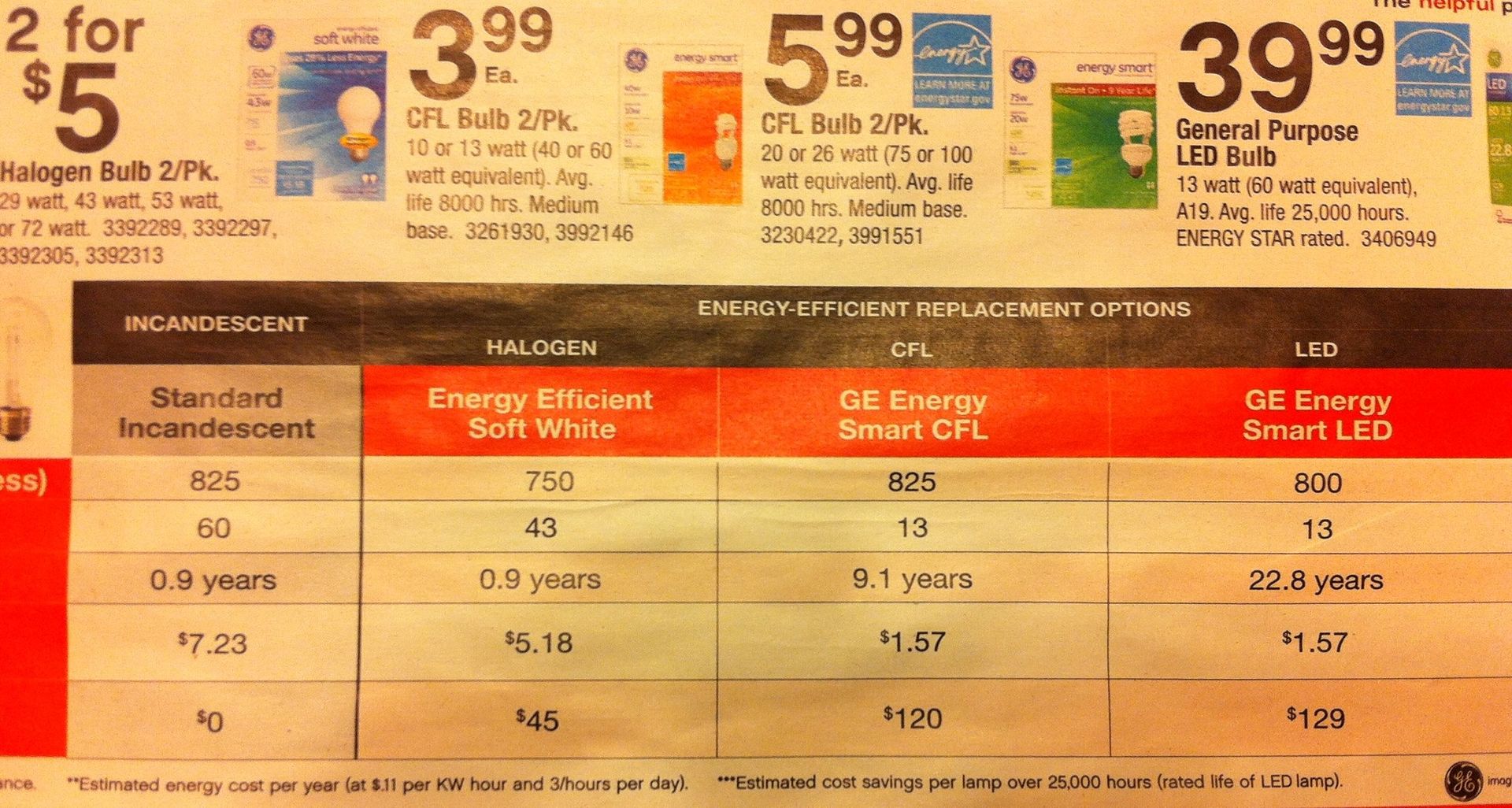clearly there is a large YMMV gap among users here of cfls. starting with the first rebates several years ago i made a decision to completely switch to the cfl format. seemed like a no brainer. as has been pointed out, with the subsidies offered they are very inexpensive and whenever one burned out or started flickering i just replaced it. when the first led house lighting bulbs came out i tried them and got nowhere, the wife hated the color, they were too directional for general household lights. as i stated above i put them in some places where accessibility was an issue and the family tended to leave them on. over the following years i have tried a number of led bulbs attempting to solve some of the issues described but with limited success. just recently i read about the nationally sponsered “L” prize competition with a $10million cash prize for the winner/ Phillips won this competition with their 10W (9.7W) 60W replacement bulb reportedly with 93.4lm/W. current subsidized prize is ~$25 per bulb going down to $15 and then to $8bulb in the following years. i am going to purchase a few of these (just because i can) to give them a try but it seems that the future may be getting brighter (NPI) for household led replacement bulbs. meanwhile i can not wait to throw out all of my remaining cfls.
btw lest i be called a shill for philips, i have no former, current or future affiliation with home depot or phillips or pretty much anyone. ![]() it would be nice to have someone more knowledgeable than i take a look at these new generation bulbs and give a review.
it would be nice to have someone more knowledgeable than i take a look at these new generation bulbs and give a review.
ken

